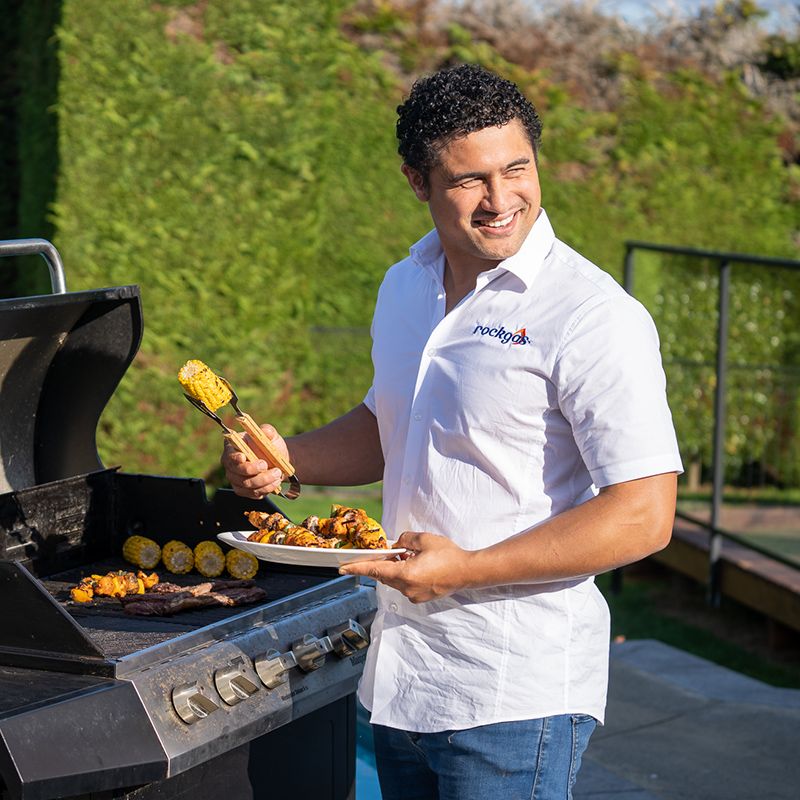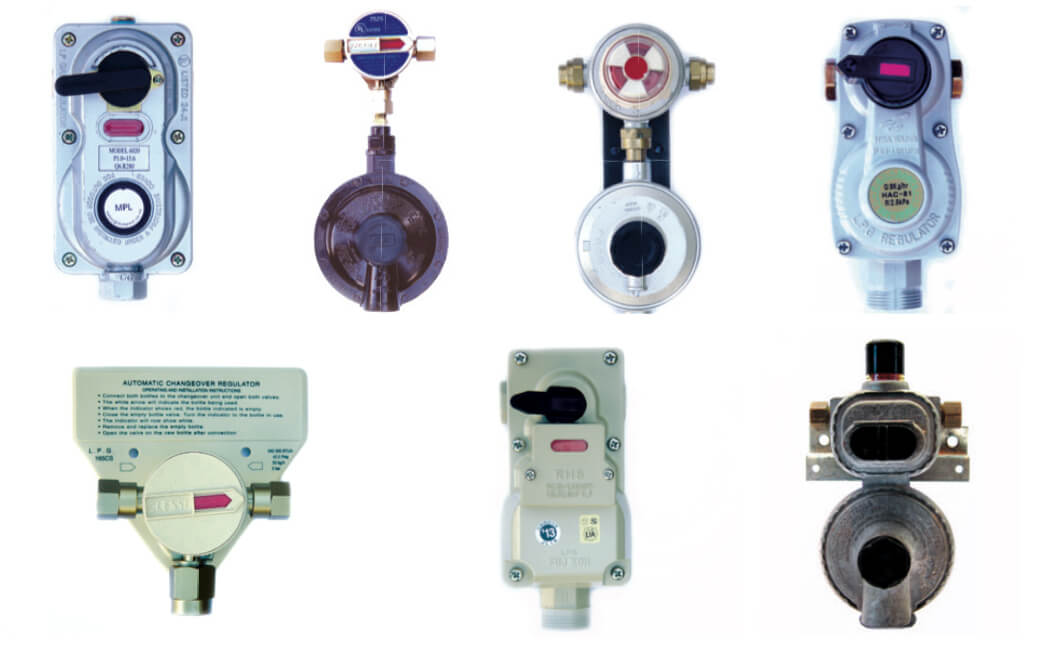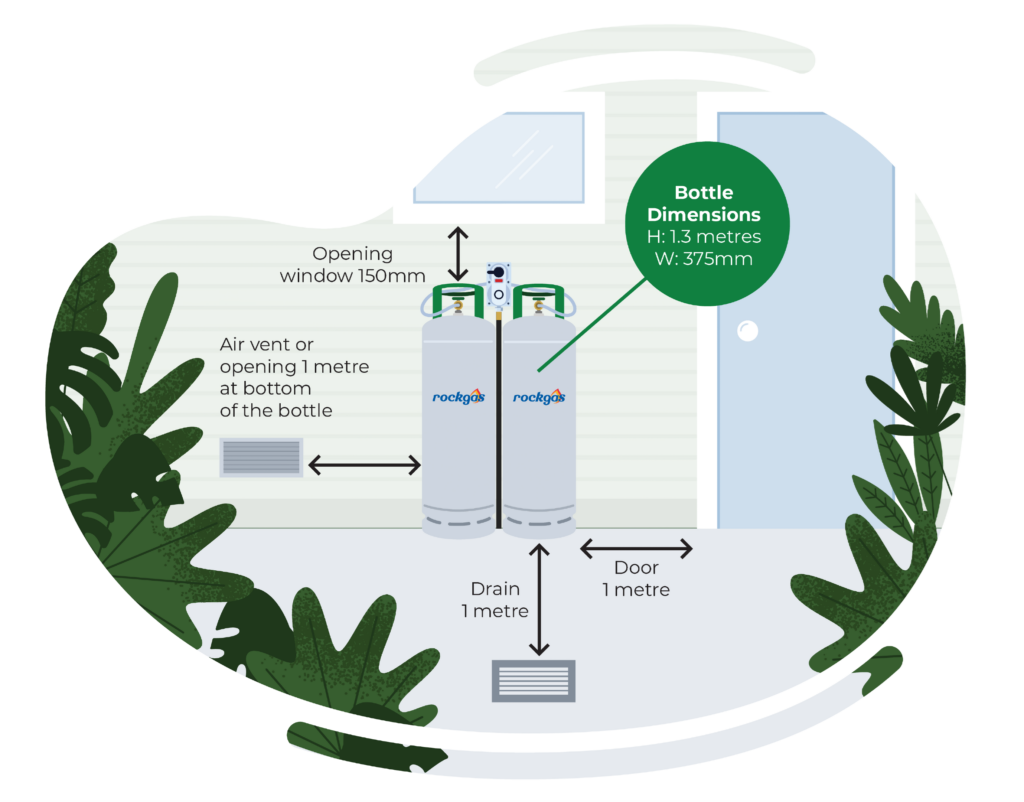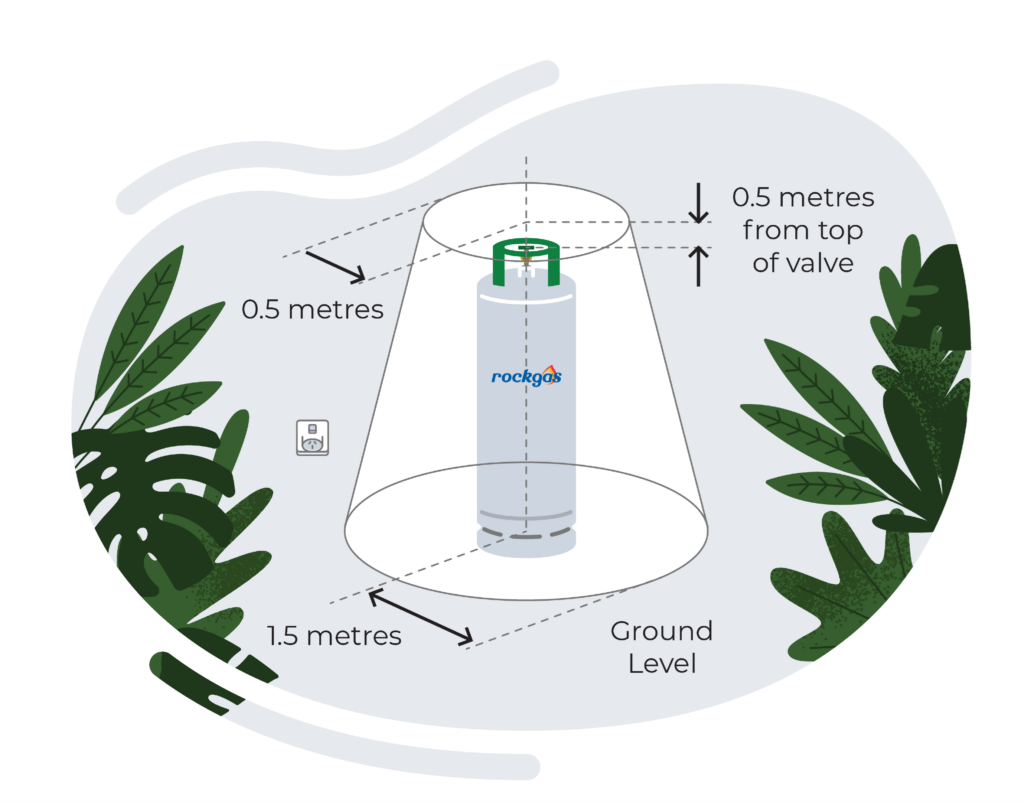LPG bottle basics
LPG isn’t just great for cooking, hot water and heating – it’s safe and really easy to use. That said, there are some safety tips worth knowing, including knowing how your LPG bottle and fittings work. This little video explains what to look for before every Rockgas delivery. Remember if you’re unsure about anything, it’s best to just leave it alone and give us a call on 0800 762 542.

Edutainment series
Visit our Edutainment series for some helpful guides on LPG
Automatic regulators
These come in all sorts of shapes and sizes, but do the same job in regulating gas flow and telling you when a bottle is empty. (So don’t adjust the directional arrow once it’s pointing to an empty bottle, as it shows us which one needs replacing!)

Legal minimum clearance required when positioning two 45 kilogram Rockgas LPG bottles
These specifications are there to keep you and your loved ones safe. We cannot deliver to homes where these conditions are not met (we’re happy to inspect this for you beforehand). All minimum clearances are set by regulations. You can find out more at www.gasnz.org.nz/resources for our industry code of practice. You can also read our minimum delivery standards.
Bottle distance from ignition sources
Ignition sources are basically anything with a naked flame, or with the ability to spark a flame, e.g. like a power outlet. All LPG bottles must comply with these minimum distances. If your site has more than 100kg of LPG (more than 2 x 45kg bottles), you’ll also need a Location Compliance Plaque.
Note: NZ Regulations require a Location Compliance Certificate to be issued for sites with more than 100kg of LPG (more than 2 x 45kg bottles).
How much LPG do you have left?
Try the warm water trick:
1. Pour warm (not boiling) water down the side of the bottle.
2. Wait a few seconds, then run your hand down where the water went.
3. The spot that feels cool is where the LPG level sits.
The level of LPG in the full bottle is just over three-quarters of the bottle’s height, which allows for the expansion of the gas inside.
Don’t try and test how much LPG you have by shaking or tapping the bottle, its not accurate and you may damage the bottle.
How to connect your LPG bottle
Connecting and disconnecting any LPG bottle needs to be done carefully and safely and we recommend you read our safety information sheets:
– Connecting and disconnecting LPG bottles
– Connecting forklift bottles
Staying safe
For additional safety information, click here for our latest information tips on staying safe with LPG.
Bottle delivery information
We take health & safety seriously for our delivery team. Anytime you have LPG bottles delivered, there are some non-negotiables when it comes to safety, including:
Removing obstacles
Your driver will use a trolley to transport your LPG bottle to your site. This means access should be kept clear, with all obstacles removed. Difficult, delicate or decorative surfaces should also be avoided.
Clearing paths
As a full bottle weighs 90kg, our drivers will need to get as close to the house as possible. Please make sure they can get close enough without putting themselves at risk of injury. If in doubt, give us a call first.
Managing stairs
If stairs just can’t be avoided. Access to cylinder compound should not have more than 6 steps. Steps should have a minimum of 2:1 tread depth to tread rise and the maximum step tread riser should be 125mm.
Accessing driveways
Can your driveway handle heavy vehicles? Is it too steep, soft, narrow or slippery/lacking grip? Do you have a particularly long driveway? Is there room for a large vehicle to turn around? Either way, it’s worth giving us a heads up so we can safely access your property or find a workaround.
Pets
We’re big fans of furry friends—but for everyone’s safety just make sure any dogs are safely inside or behind a fence, Even the friendliest pups can get a bit too excited, and we need a clear space around the bottles to deliver safely.
Locked Gates
Got a locked gate? Just make sure it’s unlocked on delivery day. We can’t give an exact time in advance, so best to keep access available all day.
For the full the list of our Rockgas Minimum Delivery Standards, please click here minimum delivery standards.
How LPG is priced
How LPG is priced
The price of LPG isn’t set in stone – it can move around depending on a few key things: international market prices, exchange rates, transport and delivery costs, and government regulations. Here’s a quick look at what goes into the cost:
How international prices determine what you pay
Even though most of our LPG is made right here in New Zealand, it’s still priced off an international benchmark called the Saudi Aramco Contract Price (Saudi CP), which changes every month. And since it’s priced in US dollars, the exchange rate also plays a part in what you end up paying.
The role of Government regulation
Some of the cost comes from regulatory schemes like the New Zealand Emissions Trading Scheme (NZ ETS). This puts a price on greenhouse gas emissions and means companies like us need to buy emissions units to cover our LPG usage. Those costs are included in the price you see.
Transport and logistics costs
Getting LPG from its source to your home takes a few steps. It travels from the source or port to our depots, then it’s trucked out to homes and businesses all over the country. Road user charges, shipping, storage, and the distance to your place all add up behind the scenes.